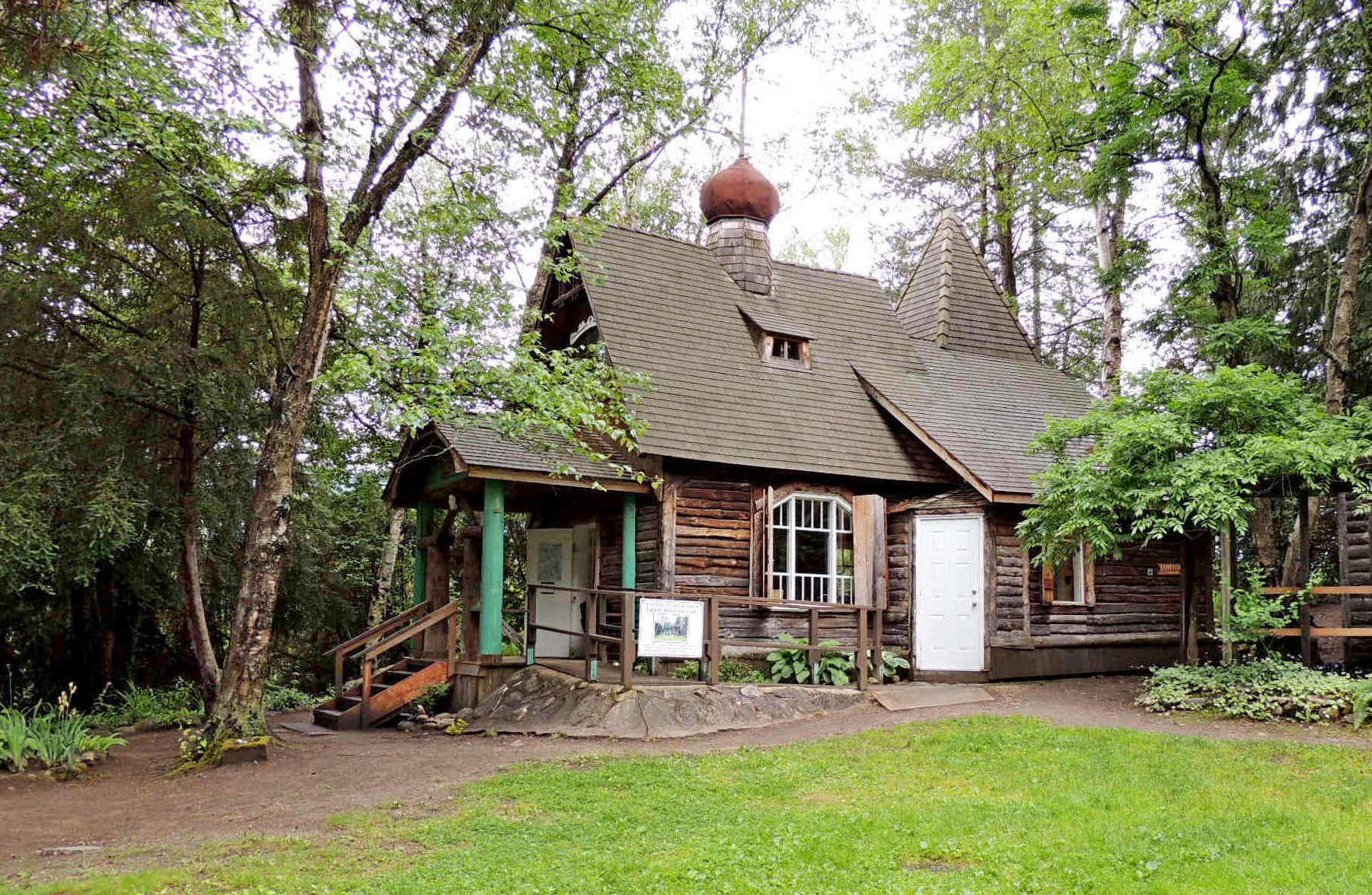|
 Russian Chapel House, Zuckerberg Island, Castlegar, BC Posted by:  T0SHEA T0SHEA
N 49° 18.948 W 117° 39.361
11U E 452321 N 5462769
Alexander Zuckerberg's Russian Chapel House, built on Zuckerberg Island in the 1930s, exhibits classic Russian Orthodox architecture, down to the "onion dome" on top. The island is accessible via a suspension bridge from 7th Avenue & 9th Street.
Waymark Code: WMHBV9
Location: British Columbia, Canada
Date Posted: 06/21/2013
Views: 4
This painting of Russian Chapel House was done in 2011 by Tea Preville, a Nelson resident whose body of work has become quite large. She is an artist of eclectic output and eclectic media, this one an oil on canvas, from her online gallery of churches in Castlegar, Robson, Brilliant & area.

The photo was taken June 20th, 2013 at 3:53 P.M. Painting and photo are done/taken from the lawn, roughly west of the house.

From Zuckerberg Island:
Influenced by Russian Orthodox country chapel architecture, this house is built in its style and setting as a reflection of the painting ‘Beyond Eternal Peace’ by the Russian mystic and painter Isaac Leviton. Alexander Zuckerberg was an Estonian, educated in Czarist Russia as a civil engineer, a self-taught cabinetmaker and sculptor.
After Alexander Zuckerberg’s death in 1961, the island and its buildings deteriorated for 20 years until it was purchased by the city in 1981. In the spring of 1983 the Castlegar Rotary Club began developing it as a park.
From Columbia River:
STORY OF THE ISLAND
Long ago the Columbia River carved through the Selkirk Mountains forming a major valley. The ice age buried the river and mountain tops with glaciers. As the ice melted into the valley the Columbia River had, at times, many river channels. Zuckerberg Island may have been formed as a lag deposit within this channeling.
The island formation and unveiling after the ice age invited rich and diverse vegetation and wildlife communities. The relatively wet and mild climate supported this rich environment which attracted native inhabitants who prospered by the local bounty. These Indians settled on the island during the winter using their stored food reserves of salmon. Even as explorer David Thompson surveyed this area of the Columbia River in 1811, the Indians were still inhabiting the island during spring fishing and winter camp.
The attraction of the island drew Alexander Zuckerberg to establish his special island home. And even today, as a unique river front park, Zuckerberg Island remains not only a place of beauty but also a legacy to its historical past.
ZUCKERBERG, THE MAN
ALexander Feodorovitch Zuckerberg was trained as a civil engineer. He taught mathematics in a Russian high school until the Revolution of 1917, then immigrated to Canada in 1921 with his wife, Alicia and son and daughter, Gilbert and Asta. In 1931 he came to Castlegar at the request of Peter Verigin II to teach the Doukhobor children. Shortly afterwards, he settled on the island and began building the Chapel House. He was a Tolstoyan and his lifestyle reflected his admiration for the great Russian writer, humanitarian, and pacifist.
Website of painting. Exact URL of painting is required: [Web Link]

Artist: Tea Preville

Date of Painting: 01/01/2011

Date of Your Photograph: 06/20/2013

Medium of Painting: oil on canvas

|
Visit Instructions:
Describe your visit, including the date, with as much detail as possible, and contribute at least one photo, original, different from those already in the gallery, if possible.
Recent Visits/Logs:
| There are no logs for this waymark yet. |
|
|
|
|